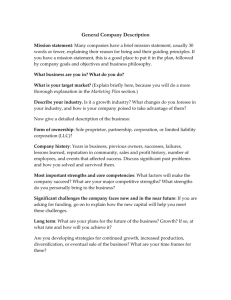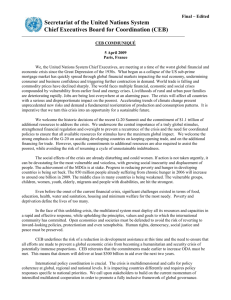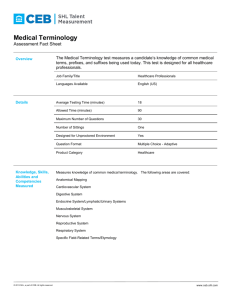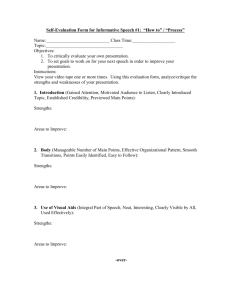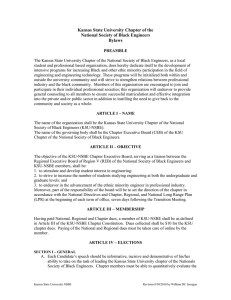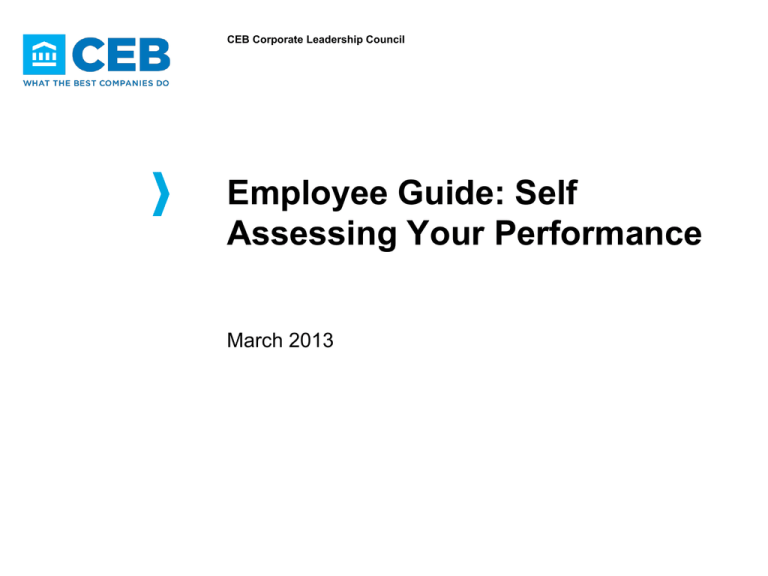
CEB Corporate Leadership Council
Employee Guide: Self
Assessing Your Performance
March 2013
How to use this guidebook:
Audience:
Self Reviews are an integral part of the performance review process. This guide helps
employees understand how to be effective at self assessments by providing them a logical
framework to identify their strengths and development areas.
How to Use:
This guidebook is written to benefit employees at all levels and jobs functions. It explains why
self reviews are valuable and how both they and their employer can get the most value out of
the self review process.
CEB Corporate Leadership Council
© 2013 The Corporate Executive Board Company. All Rights Reserved.
2
Self assessments
help you and your
manager identify
your strengths as
well as
opportunities for
skill improvement.
SELF ASSESSMENTS ALLOW YOU TO
IDENTIFY YOUR STRENGTHS
Why should you put effort into your self assessment?
Self assessments, as part of your formal review process, are used to
inform talent decisions such as promotions and pay increases.
Your feedback gives managers visibility into your professional aspirations,
of which they might otherwise be unaware.
Self reviews are an opportunity for you to showcase to your managers
what you believe are your greatest successes and contributions to the
organization.
Your insight helps managers identify where they can allocate more
resources to improve your skills and performance.
A well thought out self assessment, identifying how you could contribute
more if certain skills were improved, in addition to highlighting your assets,
is a way for you to express a commitment to your organization.
CEB Corporate Leadership Council
© 2013 The Corporate Executive Board Company. All Rights Reserved.
3
Self Assessment Do’s and Don’ts
Don’t…
Provide unbalanced feedback; this is your
opportunity to play up your successes, but you
should also be candid about areas that need
improvement
Use generalized or ambiguous language when
describing your strengths and development areas
Blame your company or manager for your
weaknesses
Gloss over or ignore areas where you need to
improve your skills or performance; your manager is
likely aware of them and will appreciate your
candidness
Be overly modest about your contribution to your
organization; this is your opportunity to highlight
your successes
Don’t worry about whether your self assessment will
be the same as your manager’s assessment of you
so long as you can defend your personal opinion of
your performance
CEB Corporate Leadership Council
© 2013 The Corporate Executive Board Company. All Rights Reserved.
Do…
✓ Be honest and objective about your skills, commitment
to work, and interaction with other employees
✓ View the self assessment as a tool to identify
development needs in order to improve them
✓ Be able to defend to your manager why you believe
your self ratings accurately reflect your performance by
offering specific examples that illustrate your viewpoint
✓ Detail steps that you and your organization can take to
improve your performance in areas you believe need
improvement
✓ Highlight areas where you have exceeded expectations
✓ Frame your performance against your impact on
organizational or divisional goals
✓ Identify areas in your skill set where you need to
improve
4
ACTION STEPS TO IMPROVE YOUR SELF ASSESSMENT
Follow the action steps below prior to your self assessment in order to write a well articulated self review.
Step 1
Consider
projects and
tasks you
worked on
across the
past year.
Step 2
Step 3
Step 4
Step 5
Think about
the skills you
need to
complete
those
projects or
tasks well.
Consider how
well you
demonstrate
those skills;
divide your
performance into
strengths and
development
areas.
Provide at least
one example
from your daily
work which
illustrates why a
skill is a strength
or development
area for you.
List what steps
you and your
organization
can take to
improve your
performance
across
development
areas.
CEB Corporate Leadership Council
© 2013 The Corporate Executive Board Company. All Rights Reserved.
5
SELF ASSESSMENT WORKSHEET
Instructions: Use the tool below prior to taking your self assessment to ensure you have considered the major contributing factors to your
overall performance. Refer to the action steps on the previous page for additional guidance.
Part 1
Consider each of the major projects or tasks you worked on across the past year and consider the needed skills to perform those projects well. Then
identify whether those skills are currently one of your strengths or are development areas.
Project/Task:
Project/Task:
Required Skill: __________
Strength
Development area
Required Skill: __________
Strength
Development area
Required Skill: __________
Strength
Development area
Project/Task:
Required Skill: __________
Strength
Required Skill: __________
Development area
Strength
Required Skill: __________
Strength
Required Skill: __________
Development area
Strength
Required Skill: __________
Strength
Development area
Development area
Development area
Required Skill: __________
Strength
Development area
Part 2
Strengths
Development Areas
List each of your major strengths identified above and provide at least
one example of a time when you demonstrated each strength.
List each major development area identified above and provide a
concrete example of why you think it’s a development area. Also list
measures you and your organization can take to improve your
performance.
Strength: __________
Example:
Development Area: __________
Example:
Steps for Improvement:
Strength: __________
Example:
Development Area: __________
Example:
Steps for Improvement:
Strength: __________
Example:
Development Area: __________
Example:
Steps for Improvement:
CEB Corporate Leadership Council
© 2013 The Corporate Executive Board Company. All Rights Reserved.
6
CEB Corporate Leadership Council
© 2013 The Corporate Executive Board Company. All Rights Reserved.
7

